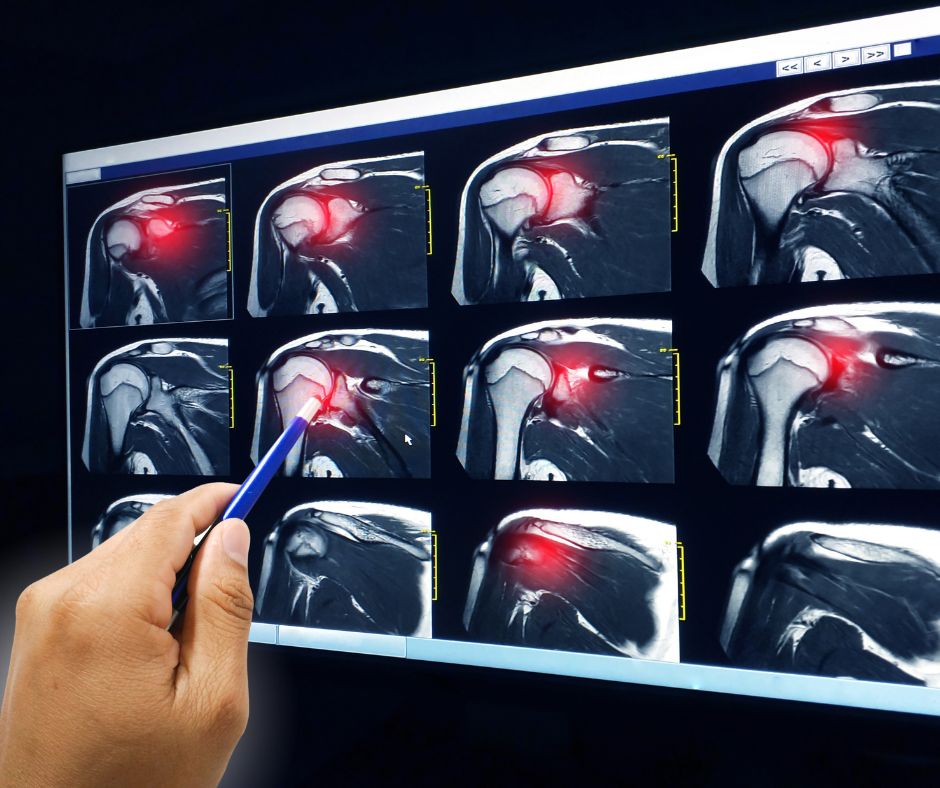What is the rotator cuff?
Your rotator cuff is comprised of 4 muscles, and their tendons, in the shoulder. Infraspinatus, subscapularis, teres minor and supraspinatus. These muscles all allow movement in the shoulder joint, but also provide stability in keeping the humerus in place.
What is a tendinopathy?
You might have heard of terms such as tendonitis, tendinosis and, tendinopathy?
What’s the difference?
Tendinitis is where there is an inflammation or irritation to the tendon, including the suffix “-itis”, meaning inflammation.
Tendinosis is where there is a breakdown of the tendon at a cellular level, but no inflammation.
Tendinopathy is where there is a change or insult to a tendon, possibly through overuse or an injury.

What are the symptoms?
Rotator cuff tendinopathy can be quite uncomfortable, usually with a gradual increase in symptoms. A sudden, severe onset of pain is unexpected, but can occur. Pain or tenderness in the areas of the rotator cuff tendons or the shoulder joint may be indicators of the condition. Increasing weakness, stiffness or inability to move the shoulder may present. In some cases, there may be swelling. Movements that may aggravate the shoulder with tendinopathy include:
- Reaching behind or overhead
- Heavy lifting
- Lying on the shoulder
- Falling unexpectedly on outstretched hand or onto the shoulder
- Pulling or dragging
What may cause rotator cuff tendinopathy?…
30% of people will experience shoulder pain at some point in their life, with up to 50% of people experiencing some shoulder pain annually. Around 30% of the population will also have suffered from rotator cuff tendinopathy. We can see that it is quite common. Here are some of the risk factors for developing rotator cuff tendinopathy. The following risk factors can be applied to most other tendinopathies also.
Extrinsic
- Prolonged or awkward postures
- Heavy lifting/repetitive movement
- Working with arms overhead for prolonged periods
- Lack of rest
Intrinsic
- Overweight/higher adiposity
- Metabolic disorders
- Older age
- Muscle imbalance/inactivity
- Decreased flexibility
How can physiotherapy help me with a rotator cuff tendinopathy?
Physiotherapy can assist with strategies to help with initial pain and movement loss. Through strengthening and exercises, we can improve general movement and we can help build up the entire shoulder and scapular complex in order to regain smooth, painless movement.
If you feel you may have a shoulder problem that isn’t going away, call us at our Bishopstown or Kanturk Physiotherapy clinics, so we can assess your shoulder and come up with a plan for recovery.


